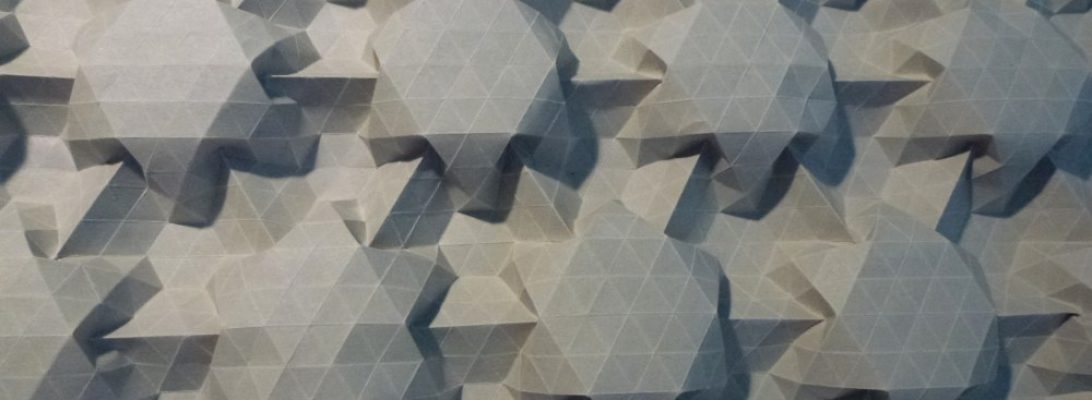Australia is the home of many unique animals – few come odder than monotremes, mammals that lay eggs – an echidna is one such critter.

I had seen folds of Steven Casey’s Echidna but struggled to find a source of diagrams – only by drilling down in Pinterest did I find some copyright infringer’s scanned pages of the diagrams (sorry, I would have purchased them could I find a publication that had them) and knew I had to have a go at it.
Central to the success of this model is the lovely crop of spines – these are treated scales (much like those that adorn Satoshi Kamiya’s Ryu Jin 2.1+), a lovely “preliminary base” tessellation that I had already mastered. the rest of the model is making the surrounding paper do the work of all the other stickey-outey bits of the animal.

I particularly love the snout and head, so simple but so nice. It has 4 feet, each with toes – just genius.
You fold it, the resultant shape before you collapse it into it’s end 3D shape looks a lot like a pelt – not sure National Parks and Wildlife would appreciate the notion of an Echidna Pelt, but it then becomes round and plumptious and locks together ingeniously into an adorable spikey ball full of character.

The test of a “good” model in my opinion, is it’s stabilty without assistance, and this it pretty good. I merely applied a couple of small glue dots to stop seams spreading (in our climate, with dry/humid cycles, paper tries to unfold unless you stop it via locking mechanisms, armatures, treatment etc).
this model is fiddly – I cannot imagine folding this with a smaller bit of paper, although I have seen it done so. My echidna is nearly life-size, and my wife recognised it straight away (again, a sign the model is a good one).

I would like to fold this again, with some pretty textured Unryushi tissue (probably brown with cream strands, would look really cool), but using up a scragg end of a 65cm Ikea patterned Kraft roll worked also.

